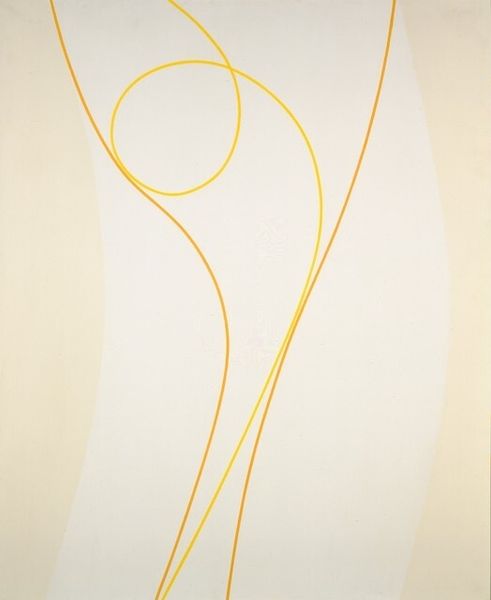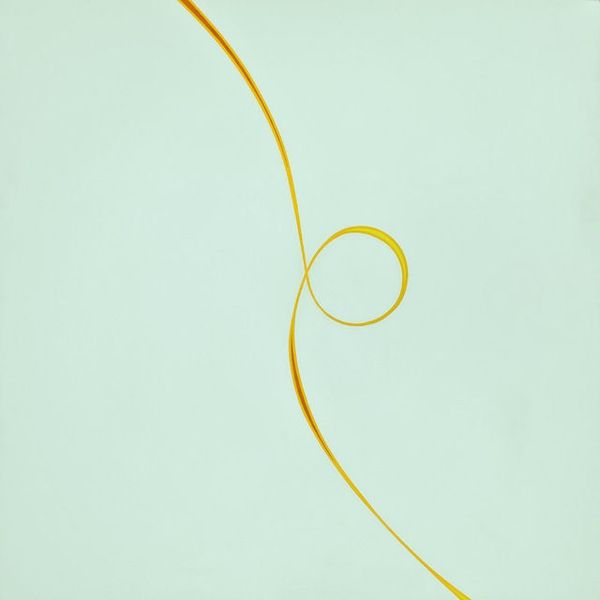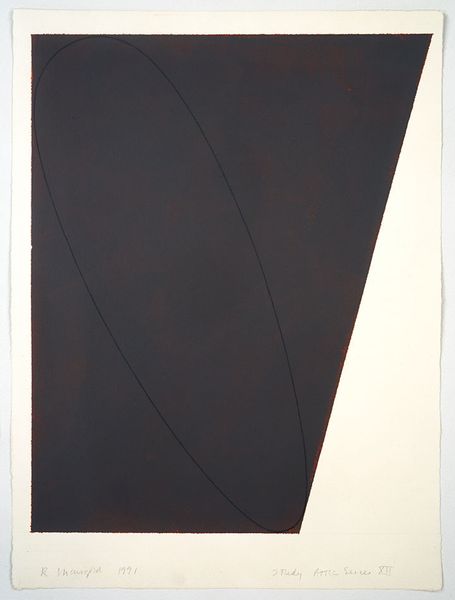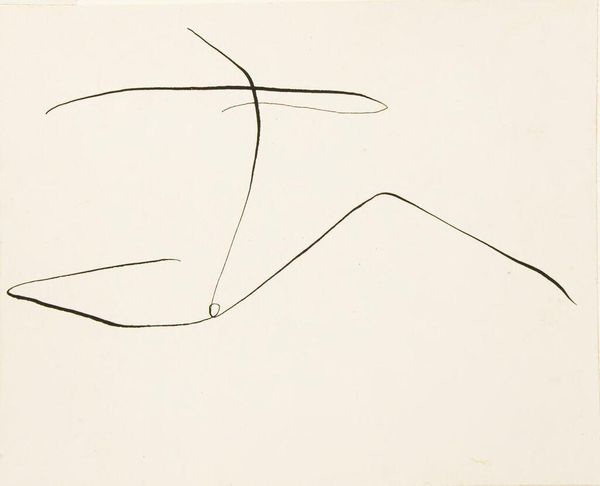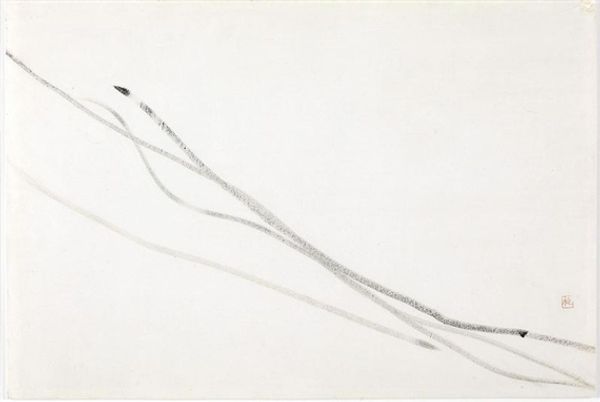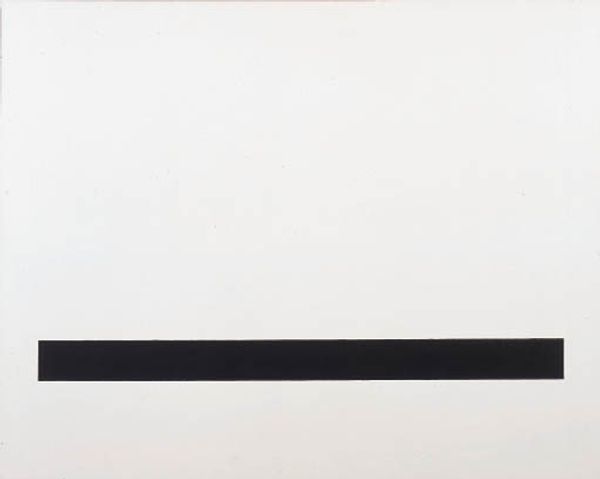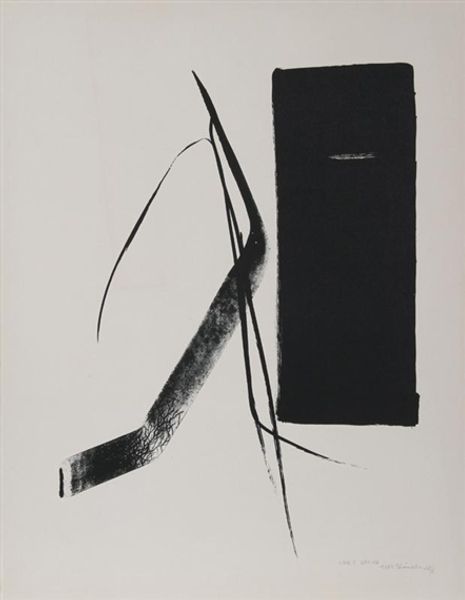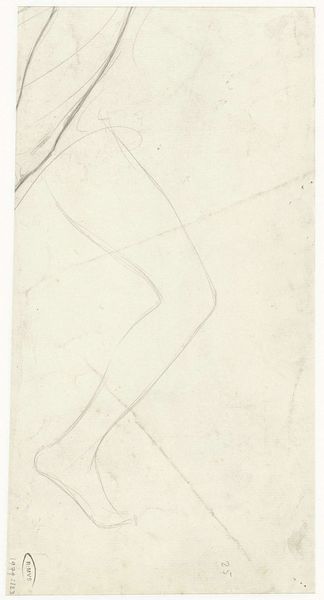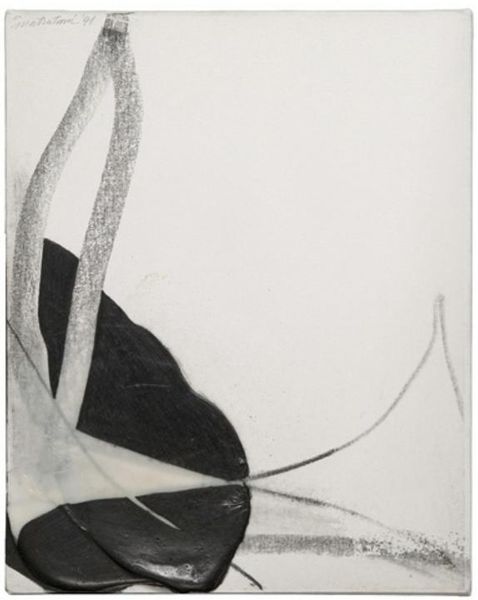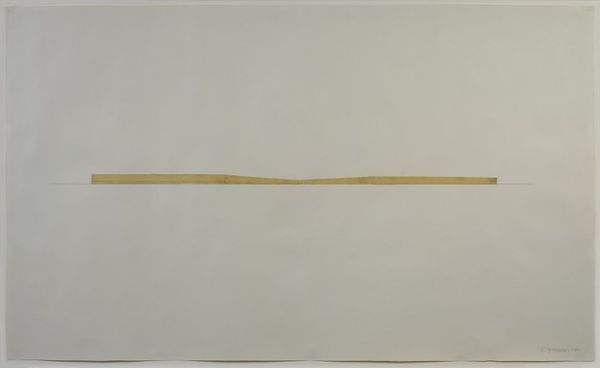
painting, acrylic-paint
#
painting
#
acrylic-paint
#
tonal
#
geometric
#
abstraction
#
line
#
modernism
Dimensions: overall: 55.9 x 45.7 cm (22 x 18 in.) framed: 56.4 x 46.4 cm (22 3/16 x 18 1/4 in.)
Copyright: National Gallery of Art: CC0 1.0
Curator: It's striking how minimal this piece is. I mean, just a line… but, wow. There's a loneliness to it, a quiet expansiveness. Editor: Indeed. What you're observing is Georgia O'Keeffe's "Winter Road I", painted in 1963, done in acrylic paint. What's so compelling about this piece is how it emerged at a period when O'Keeffe’s vision began to diminish. This prompted her shift toward creating simplified compositions in sharp contrast to her previous, complex abstractions. Curator: Ah, so this is a pared-down O’Keeffe, which explains its visceral effect. This brown band across all that white… it feels almost… geologic, elemental. It’s a landscape stripped to its essence. What do you see in the geometry? Editor: I agree—minimal is precisely the right descriptor. And in my view, that very geometry speaks to the socio-political undercurrents, and art’s cultural accessibility and evolving identity. Curator: Oh, say more. Editor: Post-war, there's a growing desire for simplicity. Modernism wanted art to be for all. The sparseness reflects an attempt to get to a universal language through art. I feel a resonance with the Land Art movement as well, that interest in essential shapes found in the physical environment. O'Keeffe herself had become part of the national narrative as a singular artist figure. Her personal choices echoed wider artistic movements as abstraction took root across diverse mediums. Curator: Absolutely. Looking at this curve…It reminds me of time itself, its endless journey. I'm curious—could one draw out themes around ageing with such minimal form? O'Keefe later mentioned how she painted "Winter Road" out of a deep sadness with getting old and facing loss. Editor: It is certainly there. One might consider the act of distilling complex emotions through radically simplified geometric form a distinctly postmodern notion—that through fragmentation, something essential might be preserved from complete annihilation. That notion speaks so strongly to contemporary experiences of anxiety and disorientation as our physical environments undergo tremendous alteration from accelerating urban and climactic change. O'Keefe’s abstract gesture mirrors this mood by leaving much to the imagination amidst sparse design choices; allowing viewers space where new meanings could emerge unburdened by inherited narratives or outdated political orders. Curator: So beautiful… It is all rather poignant. Looking at the white again, like snow, endless snow... There is a beauty in finding a single line along all this. Editor: Agreed. Thank you, this piece shows us how modern and minimalist work helps us explore feelings during social change.
Comments
No comments
Be the first to comment and join the conversation on the ultimate creative platform.
